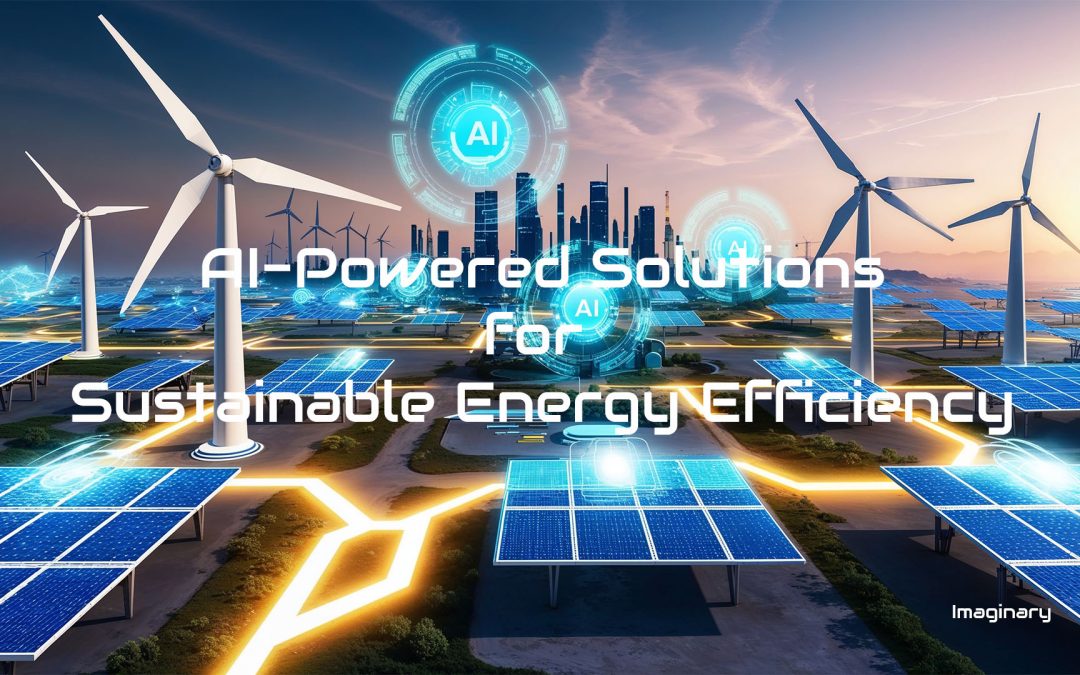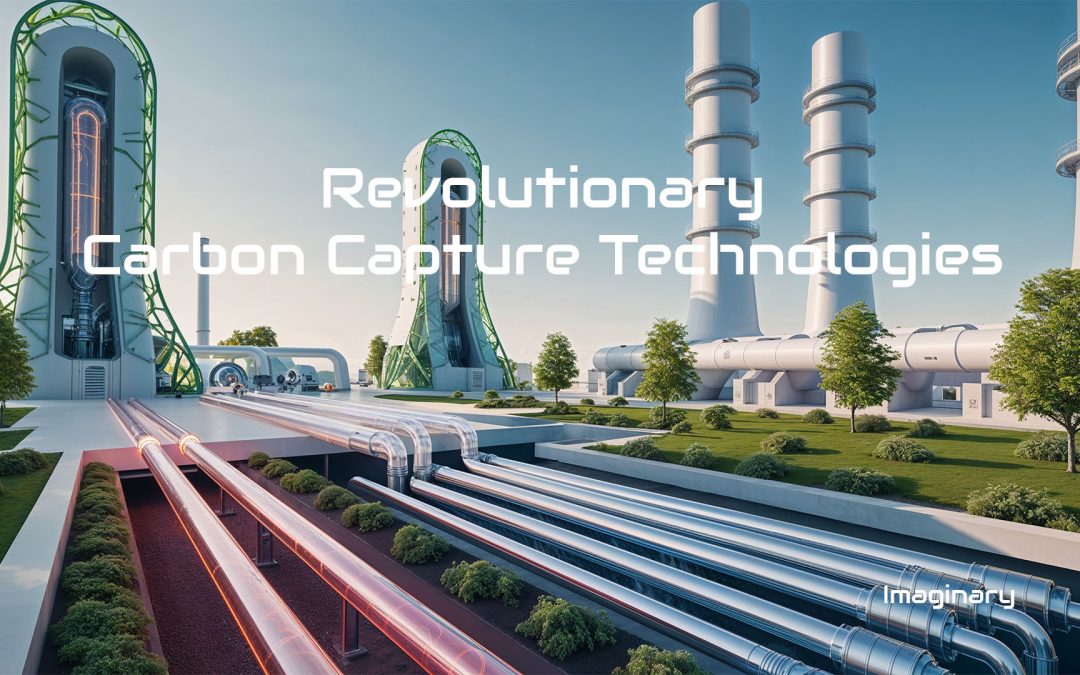
Sustainable Energy Efficiency: Discover 21st Century AI-Powered Solutions
Introduction – AI-Powered Solutions for Sustainable Energy Efficiency
Energy efficiency is no longer just a goal but a necessity in today’s era of climate change and resource scarcity.
With artificial intelligence (AI) driving innovation, AI-powered energy efficiency solutions transform how we consume, distribute, and optimize energy.
This article explores the profound impact of AI on energy efficiency, highlighting its revolutionary potential to create a more sustainable future.
What are the Components of These Solutions?
AI-powered solutions for energy efficiency involve utilizing machine learning, neural networks, and predictive analytics to manage and optimize energy consumption.
These technologies enable real-time monitoring, accurate forecasting, and dynamic control over energy systems in industries, buildings, and cities.
Key Components:
- Smart Grid Optimization: AI algorithms analyze grid data to balance supply and demand effectively.
- Energy Management Systems (EMS): AI-powered EMS integrates data from multiple sources to recommend actions that optimize energy use.
- Predictive Maintenance: AI tools identify potential equipment failures, reducing energy waste.
Benefits of AI in Sustainable Energy Efficiency
- Cost Savings: AI reduces unnecessary energy consumption, cutting operational costs.
- Reduced Carbon Footprint: Intelligent optimization minimizes greenhouse gas emissions.
- Enhanced Reliability: AI improves the stability of energy networks, reducing outages.
- Scalability: AI solutions adapt to varying scales from single households to entire cities.
Applications of AI-powered Solutions
1. Smart Buildings
AI optimizes heating, ventilation, air conditioning (HVAC), and lighting systems by learning usage patterns.
- Example: Google’s DeepMind reduced data center energy usage by 40% using AI.
2. Renewable Energy Management
AI enhances the efficiency of renewable energy sources like solar and wind by forecasting energy generation and optimizing storage.
- Example: AI models predict wind turbine performance, ensuring optimal output.
3. Smart Grids
AI improves electricity distribution by detecting anomalies, managing demand, and integrating renewable energy.
- Example: AI-driven systems in Europe’s electricity grids balance supply and demand dynamically.
4. Transportation
AI-enabled systems optimize fuel consumption and route planning, reducing energy wastage.
- Example: AI algorithms in EVs like Tesla enhance battery efficiency and range prediction.
5. Industrial Optimization
AI streamlines industrial processes by optimizing machinery operations and energy utilization.
- Example: Siemens’ AI-based manufacturing solutions improve production while cutting energy costs.
Challenges and Limitations
While AI-powered solutions for energy efficiency offer numerous advantages, they come with challenges:
- High Initial Costs: Implementing AI solutions requires significant investment.
- Data Privacy Concerns: AI systems need extensive data, which is raising privacy issues.
- Skill Gap: The integration of AI requires skilled personnel, which may be lacking in some regions.
- Energy Consumption of AI Systems: Paradoxically, AI operations consume energy, necessitating sustainable practices.
Future Trends – AI in Sustainable Energy Efficiency
1. Decentralized Energy Systems
AI will enable microgrids and peer-to-peer energy trading.
2. Advanced Predictive Analytics
AI will improve demand forecasting accuracy, enhancing grid reliability.
3. Integration with IoT
AI and IoT will work together to create more innovative, interconnected energy systems.
4. Policy Support and Global Adoption
Governments will incentivize AI-powered energy solutions, accelerating their adoption.
❓ FAQs – AI in Sustainable Energy Efficiency
- What are AI-powered solutions for sustainable energy efficiency?
A.: AI-powered solutions use advanced algorithms to optimize energy use, reduce waste, and enhance sustainability. - How do smart grids benefit from AI?
A.: AI analyzes grid data in real-time, seamlessly balancing supply and demand and integrating renewable energy. - Can AI reduce household energy bills?
A.: Yes, AI-powered systems can optimize household energy use, lowering utility bills. - What industries benefit the most from AI in terms of energy efficiency?
A.: Manufacturing, transportation, and energy production see significant benefits. - Is AI sustainable?
A.: While AI consumes energy, its efficiency gains often outweigh the energy costs. - How does AI improve renewable energy efficiency?
A.: AI predicts energy generation, optimizes storage and manages distribution efficiently. - What role does IoT play in AI-powered energy solutions?
A.: IoT devices provide real-time data that AI uses to optimize energy systems. - Are AI-powered energy solutions expensive?
A.: Although initial costs can be high, long-term savings and efficiency gains often justify the investment. - How does AI contribute to a reduced carbon footprint?
A.: AI significantly lowers carbon emissions by minimizing energy waste and optimizing renewable energy. - What is AI’s future in energy efficiency?
A.: AI will drive innovations like decentralized systems, advanced analytics, and smarter grids.
Conclusion and Summary – AI in Sustainable Energy Efficiency
AI-powered sustainable energy efficiency solutions represent a transformative approach to addressing the global energy crisis.
These solutions optimize energy consumption across various sectors by leveraging advanced analytics, machine learning, and IoT integration.
From smart buildings and renewable energy management to transportation and industrial optimization, AI provides scalable and reliable tools for enhancing energy efficiency.
Despite challenges like high implementation costs and energy consumption, AI systems have benefits far outweighing drawbacks.
AI reduces operational costs, minimizes carbon footprints, and improves system reliability, paving the way for a sustainable future.
As governments and organizations embrace these technologies, AI will become indispensable to energy strategies worldwide.
📚 Related Posts You May Be Interested In
- Revolutionary Carbon Capture Technologies: 21st Century Game-Changer? ⬈
- Green Tech Innovations That Will Shape Our Future ⬈
- How AI is Reshaping Our Future Across All Sectors ⬈
This post is part of the Definitive Guide to Brilliant Emerging Technologies in the 21st Century ⬈, where you can find out more about the topic.
Thanks for reading.
Resources
- Energy.gov: Artificial Intelligence – Development of Energy (DOE) ⬈
- Google DeepMind – Using AI to fight climate change ⬈
- NordVPN IoT Security ⬈
ℹ️ note: VPNs allow users to access their IoT devices securely from anywhere in the world. Whether it’s monitoring and controlling smart home devices or managing industrial IoT systems, a VPN ensures secure—and encrypted—connectivity. - Siemens Global – Artificial Intelligence in industry ⬈
- World Energy Council ⬈
ℹ️ Note: Due to the ongoing development of applications and websites, the actual appearance of the websites shown may differ from the images displayed here.
The cover image was created using Leonardo AI ⬈.



